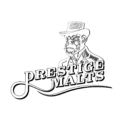Glen Spey
Introduction:
Glen Spey distillery in Speyside has a limited range of official bottlings, with the first one released in 2010. The only current official bottling is a 21-year-old expression. Independent bottlings are more readily available, offering a wider range of ages. Notable independent bottlers include Douglas Laing and Duncan Taylor. Glen Spey primarily produces single malt for use in J&B Blends.
Production:
With a modest capacity of 1.4 million liters per year, Glen Spey draws its water from Doonie’s Spring, a controversial source shared by neighboring distilleries. Stricter regulations now govern the disposal of hot water used to cool pot stills into the spring, reducing conflicts.
Pot Stills:
Glen Spey operates two wash stills with a capacity of 12,000 liters each, and two spirit stills with a capacity of 7,500 liters each. The stills have a lantern shape with a constricting neck, increasing reflux for higher efficiency and purifying the alcohol vapors. Glen Spey is one of the few Diageo-owned distilleries to use purifiers.
Maltings:
Glen Spey used its own maltings until the late 1960s when a major reconstruction took place. The distillery now sources maltings from Diageo’s industrial sites. The maltings used are unpeated.
Warehouse:
During the reconstruction in 1969-1970, the former maltings were converted into a racked warehouse. Unlike neighboring distilleries, Glen Spey opted for this alternative method to age its single malt. It uses a combination of Bourbon, Sherry, and Hogshead casks.
History:
Glen Spey started as an oatmeal mill in 1878 and was converted into a whisky distillery by James Stuart. It was later sold to the Gilbey Company in 1887 and became part of J&B Blended Whisky production. The distillery experienced mergers and expansions over the years, eventually becoming part of Diageo. In 2001, the first official bottling, a 12-year-old, was released as part of Diageo’s Flora and Fauna range. Glen Spey is known for having a ghost, said to be a soldier who tragically died in an accident during World War II.
Visitor’s Centre:
Unfortunately, Glen Spey does not have a visitor’s centre and does not offer tours.
Visitor information:
Glen Spey Distillery
Rothes
Aberlour
AB38 7AT
Information about the Distillery: |
|
| Number of bottles: | 0 Bottles |
| Country, Region: | Scotland, Speyside |
| Coordinates: | -3.208161 57.526620 |
| Status: | Active |
| Company: | Diageo |
| Still 1: | 2 x 12,000 l Normal |
| Still 2: | 2 x 7,500 l Normal |
| Fermenters: | 8 x 25,000 l |
| Founding year: | 1878 |
| Distillery output: | 1,400,000 l |
Introduction:
Glen Spey distillery in Speyside has a limited range of official bottlings, with the first one released in 2010. The only current official bottling is a 21-year-old expression. Independent bottlings are more readily available, offering a wider range of ages. Notable independent bottlers include Douglas Laing and Duncan Taylor. Glen Spey primarily produces single malt for use in J&B Blends.
Production:
With a modest capacity of 1.4 million liters per year, Glen Spey draws its water from Doonie’s Spring, a controversial source shared by neighboring distilleries. Stricter regulations now govern the disposal of hot water used to cool pot stills into the spring, reducing conflicts.
Pot Stills:
Glen Spey operates two wash stills with a capacity of 12,000 liters each, and two spirit stills with a capacity of 7,500 liters each. The stills have a lantern shape with a constricting neck, increasing reflux for higher efficiency and purifying the alcohol vapors. Glen Spey is one of the few Diageo-owned distilleries to use purifiers.
Maltings:
Glen Spey used its own maltings until the late 1960s when a major reconstruction took place. The distillery now sources maltings from Diageo’s industrial sites. The maltings used are unpeated.
Warehouse:
During the reconstruction in 1969-1970, the former maltings were converted into a racked warehouse. Unlike neighboring distilleries, Glen Spey opted for this alternative method to age its single malt. It uses a combination of Bourbon, Sherry, and Hogshead casks.
History:
Glen Spey started as an oatmeal mill in 1878 and was converted into a whisky distillery by James Stuart. It was later sold to the Gilbey Company in 1887 and became part of J&B Blended Whisky production. The distillery experienced mergers and expansions over the years, eventually becoming part of Diageo. In 2001, the first official bottling, a 12-year-old, was released as part of Diageo’s Flora and Fauna range. Glen Spey is known for having a ghost, said to be a soldier who tragically died in an accident during World War II.
Visitor’s Centre:
Unfortunately, Glen Spey does not have a visitor’s centre and does not offer tours.
Visitor information:
Glen Spey Distillery
Rothes
Aberlour
AB38 7AT
Information about the Distillery: |
|
| Number of bottles: | 0 Bottles |
| Country, Region: | Scotland, Speyside |
| Coordinates: | -3.208161 57.526620 |
| Status: | Active |
| Company: | Diageo |
| Still 1: | 2 x 12,000 l Normal |
| Still 2: | 2 x 7,500 l Normal |
| Fermenters: | 8 x 25,000 l |
| Founding year: | 1878 |
| Distillery output: | 1,400,000 l |
